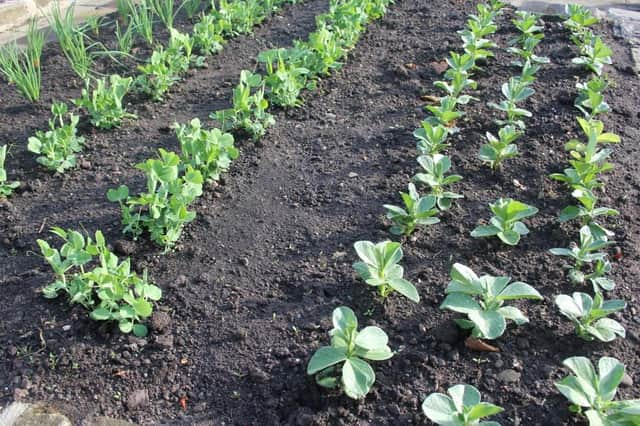GARDENING: To sow or not to sow?


But if you lack the facilities to initiate germination and offer warmth and light to the resultant young plants, it's best not to open the packet yet. Otherwise, it can be a case of sow in haste, regret at leisure!
Questions associated with failed or partial germinations are frequently heard in the build up to a new growing season, and there are several reasons Is a perceived failure simply down to our impatience? One week seems a long time when we are eagerly anticipating the appearance of seedlings, but some of the common or garden types can take up to a fortnight to germinate.
Advertisement
Hide AdAdvertisement
Hide AdIf there`s no show by then, consider the environment they are standing in. Is it too hot or too cold, is the compost too wet or dry?
The sowing depth of seed is important. That's why it's written on the packet. Impatiens, petunia, and begonia are so tiny that I mix them with fine sand before broadcasting. They`re happier on the compost surface in the light, and initially moistened in with a fine spray, than when buried underneath.
Different inhibitors exist in certain seeds, holding them in a dormant state. These need neutralising before germination can occur. For example, alstroemeria benefit from cold then warm treatment. The viability of seeds is another consideration. Those we have bought for
this year should be reliable, with a three-year sow-by date margin. However, this does not rule out packets you have found in a drawer that were bought several years ago. Success depends on how they`ve been stored. Try a simple germination test before sowing. Put a damp tissue in a saucer and place ten seeds on the surface. After a period in a warm place, you can ascertain the percentage germination potential.
Advertisement
Hide AdAdvertisement
Hide AdEnter “Oldest Seeds to Germinate” into an online search engine. One item relates to a Holy Land site, the hilltop fortress of Masada by the Dead Sea. An excavation there in the 1960`s uncovered some 2,000 years-old date palm seeds, one of which germinated. The hot, dry conditions there, which I can vouch for, had preserved it`s viability. Don`t discard your old seeds!
Whichever seed you are sowing, half-hardy annuals in a tray or vegetables in an outdoor drill, follow a routine that has proven successful in the past. Mine involves reading the instructions on the packet and examining the contents to assess how far they will go.
Always sow thinly first to ensure the surface area of a container or full length of a row has been evenly covered. If any seeds remain either add more or reseal the packet for future sowing. Be careful not to sow too thickly as this can cause damping-off in enclosed conditions. Heavy-handed sowing in the vegetable garden leads to overcrowding and extra work - a need to thin-out at the seedling stage.
If starting ornamental and vegetable plants from seed is not your cup of tea do not worry. Quite soon the first pots of seedlings and young plug plants will be appearing at gardening outlets. This will continue up to and beyond spring, allowing you to decide, depending on the facilities to hand, when is the best time to buy and grow them on. Ever tired of slugs and snails munching along the rows of seedlings before they have a chance to develop, I start most of our home-grown
Advertisement
Hide AdAdvertisement
Hide Advegetables off in pots or cell trays under cover. They are potted-on as necessary and hit the ground running when planted out, with well developed roots and substantial top growth.
There`s an established batting order, as in cricket, for the sowing of these vegetables. Onions and leaf lettuce are the opening pair, broad beans and garden peas first and second wicket down. Middle order starts in February with chitting of potatoes, shallots, onion setts, and March is time for sweet corn, runner bean, courgette, and a host of other tailenders!